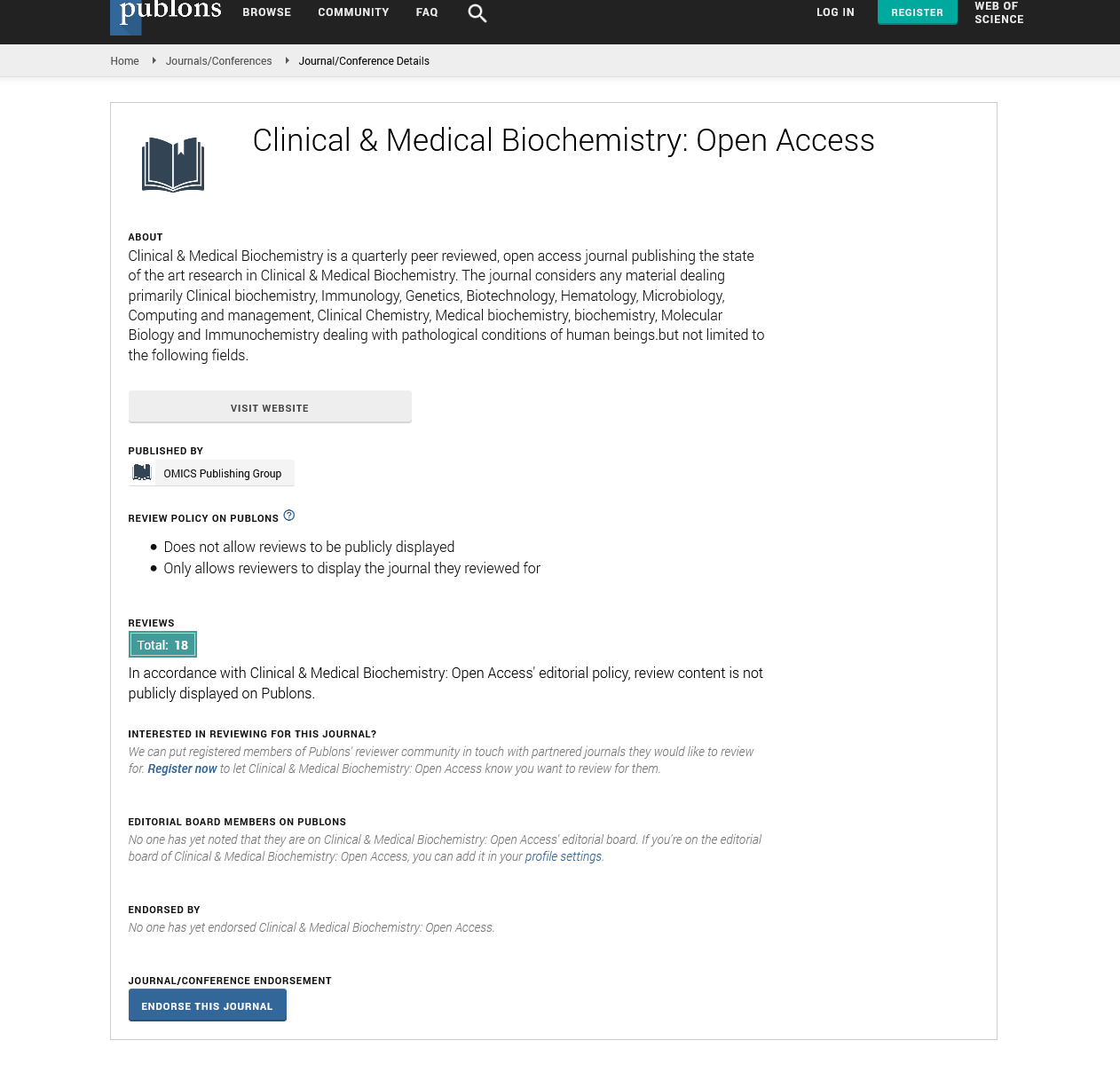Indexed In
- RefSeek
- Directory of Research Journal Indexing (DRJI)
- Hamdard University
- EBSCO A-Z
- OCLC- WorldCat
- Scholarsteer
- Publons
- Euro Pub
- Google Scholar
Useful Links
Share This Page
Journal Flyer

Open Access Journals
- Agri and Aquaculture
- Biochemistry
- Bioinformatics & Systems Biology
- Business & Management
- Chemistry
- Clinical Sciences
- Engineering
- Food & Nutrition
- General Science
- Genetics & Molecular Biology
- Immunology & Microbiology
- Medical Sciences
- Neuroscience & Psychology
- Nursing & Health Care
- Pharmaceutical Sciences
Perspective - (2024) Volume 10, Issue 3
Future Directions in DNA Sequencing Technologies and Applications
George Harry*Received: 28-Aug-2024, Manuscript No. CMBO-24-26874; Editor assigned: 30-Aug-2024, Pre QC No. CMBO-24-26874 (PQ); Reviewed: 13-Sep-2024, QC No. CMBO-24-26874; Revised: 20-Sep-2024, Manuscript No. CMBO-24-26874 (R); Published: 27-Sep-2024, DOI: 10.35841/2471-2663.24.10.229
Description
DNA sequencing technologies have experienced significant advancements over the past few decades, developing genomics and biomedical research. As we look towards the future, the course of these technologies possibilities even greater advances and applications, offering new opportunities for scientific discovery and clinical applications. The evolution of DNA sequencing has mostly influenced by the need for more quickly, more accurate and cost-effective methods. The initial innovation came with the development of first-generation sequencing technologies, which provided Fundamental results about the human genome. The availability of Next-Generation Sequencing (NGS) technologies further enhanced the step of genomic research by allowing High volume sequencing. These developments have allowed the quick sequencing of complete genomes at a fraction of the cost of previous approaches, making major genomic research more practical.
In the future, one of the primary goals will improve the accuracy and precision of sequencing technology. While current methods are highly effective, there remains a need for even greater precision, especially in the context of detecting rare variants and resolving complex genomic regions. Advancements in sequencing chemistry and technology are expected to enhance the ability to accurately identify and characterize genetic variations, leading to more reliable data for research and clinical applications. Another significant way is the development of extremely-fast sequencing technologies. The ability to generate sequence data quickly is essential for applications that need immediate information such as personalized medicine and rapid pathogen detection. Advances in sequencing stages that offer higher throughput and faster change times are anticipated to transform multiple areas, including infectious disease management and oncology. Immediate sequencing could allow timely adjustments to treatment strategies based on the latest genomic data, improving patient outcomes.
The addition of sequencing technologies with other omics approaches is also a potential area. Combining DNA sequencing with transcriptomics, proteomics, and metabolomics can provide a more complete accepting of biological systems. This multiomics approach allows researchers to explore how genetic information translates into functional results and how different molecular layers interact within cells. Such integrated analyses are expected to initiative advancements in systems biology and facilitate the development of more targeted therapeutic involvements.
Advancements in sequencing technologies are also likely to expand their applications beyond traditional research settings. The field of personalized medicine stands to benefit significantly from these developments. Sequencing technologies can be employed to modify treatments to individual patients based on their unique genetic profiles. This personalized approach has the potential to enhance the efficacy of therapies and minimize adverse effects, offering a more exact method for managing diseases. In addition to clinical applications, sequencing technologies are expected to play a pivotal role in environmental and agricultural sciences. In environmental genomics, DNA sequencing can be used to monitor biodiversity, monitor environmental changes, and study microbial communities. In agriculture, sequencing technologies can help in the development of crop varieties with desirable characters, such as improved yield or resistance to pests and diseases. These applications have the potential to address global challenges related to food security and environmental sustainability.
As sequencing technologies continue to change, there is also a growing importance on improving data analysis and interpretation. The large amounts of data generated by sequencing platforms require smooth computational tools and procedures for accurate analysis. Advances in bioinformatics and machine learning are expected to enhance the ability to take complex genomic data, identify significant patterns, and develop actionable perceptions. This will be essential for translating sequencing data into practical applications and clinical practices. The development of adaptable and field applicable sequencing devices is another exciting view. These devices could allow on-site sequencing in remote or resource-limited settings, increasing the accessibility of genomic technologies.
Portable sequencers offer the potential to facilitate actual-time disease monitoring, epidemic examinations and genomic studies in a variety of conditions. This enhanced accessibility could have an important effect on world health and research. Environmental and regulatory issues are equally significant for the future of DNA sequencing. As sequencing technologies grow more common, it is essential to deal with issues such as data privacy, permission and the appropriate use of genetic information. Clear rules and regulations must be developed to make sure that sequencing technologies are used in ways that protect persons' rights while maintaining responsible scientific advancement.
Conclusion
In conclusion, the future of DNA sequencing technologies offers considerable developments in a variety of disciplines. Advancements in precision, speed and integration with other omics technologies will continue to stimulate advancements in research, personalized medicine, environmental science and agriculture. As sequencing technologies advance, they are expected to become more accessible and significant, creating new opportunities for research and development. The continuing development of computational tools, mobile devices and regulatory structures will have a significant impact on the future path of DNA sequencing and applications.
Citation: Harry G (2024). Future Directions in DNA Sequencing Technologies and Applications. Clin Med Bio Chem. 10:229.
Copyright: © 2024 Harry G. This is an open-access article distributed under the terms of the Creative Commons Attribution License, which permits unrestricted use, distribution, and reproduction in any medium, provided the original author and source are credited.

